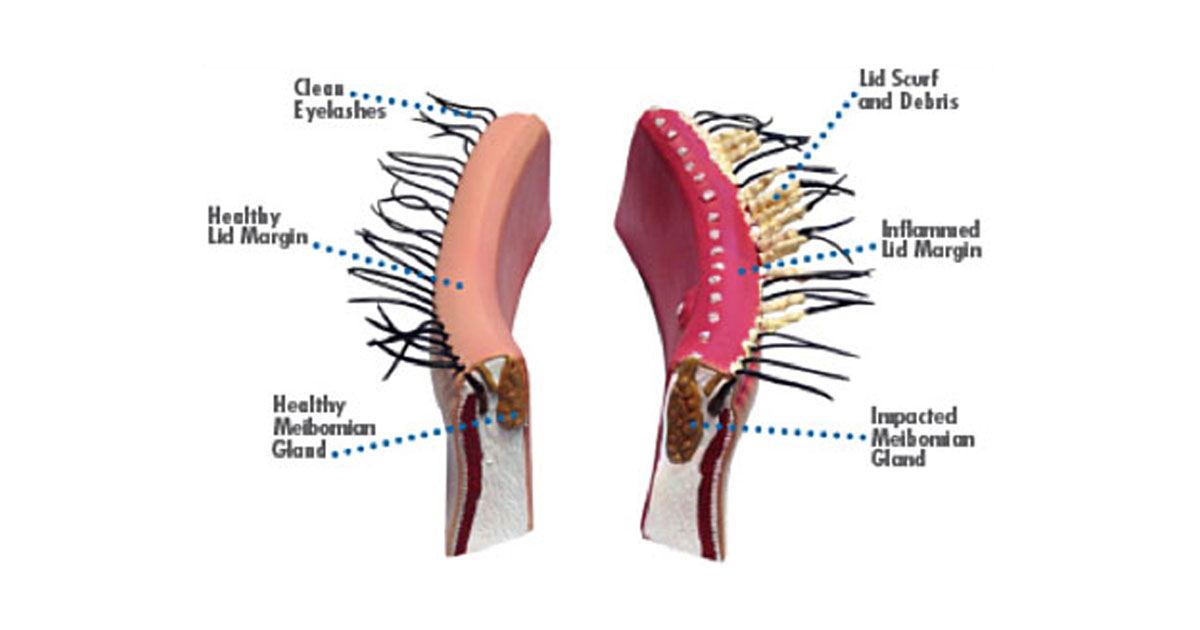
Symptoms & Management of Blepharitis
Blepharitis is one of the commonest conditions seen by an ophthalmologist. It refers to chronic inflammation of the eyelid margins, with formation of oily crusts at the base of the eyelashes (anterior blepharitis – left image), and/or blockage of the eyelid margin meibomian glands (posterior blepharitis – right image).

The meibomian glands of the eyelids play an essential role in stabilising the tear film on the ocular surface. They are responsible for the formation of the outer most, oily layer of the tear film. This layer prevents the tears from evaporating and is essential for ocular comfort.
Symptoms of blepharitis include:
Rosacea, seborrhoeic dermatitis, and eczema.
Blepharitis is common in both men and women, and affects all age groups including children. It is particularly common amongst post-menopausal women, which might point to the role of oestrogen in tear formation.
General practitioners can easily screen for blepharitis by seeking a history of the above symptoms, in the absence of reduced vision, frank eye pain or significant photophobia. It is important to reassure patients that blepharitis is not a sight-threatening condition, although it is chronic and virtually impossible to cure.
Management of blepharitis includes the following:
Secondary treatment measures such as a course of oral doxycycline, topical steroids, or punctal plugs are occasionally required, and warrant referral to an ophthalmologist.
Symptoms of blepharitis include:
- Itching and burning
- Grittiness and foreign body sensation
- ‘Tiredness’ of the eyes
- Conjunctival redness that is worse at the end of the day
- Needing to blink frequently
- Blurred vision that clears with blinking
- Watery eyes
- Mild photophobia
- Misdirected lashes or loss of lashes
Rosacea, seborrhoeic dermatitis, and eczema.
Blepharitis is common in both men and women, and affects all age groups including children. It is particularly common amongst post-menopausal women, which might point to the role of oestrogen in tear formation.
General practitioners can easily screen for blepharitis by seeking a history of the above symptoms, in the absence of reduced vision, frank eye pain or significant photophobia. It is important to reassure patients that blepharitis is not a sight-threatening condition, although it is chronic and virtually impossible to cure.
Management of blepharitis includes the following:
- Daily warm compresses to the closed eyelids (min. 5 minutes to melt the inspissated meibomian secretions)
- Followed by firm massage of the eyelids vertically towards the eyelid margins (to express retained meibomian secretions)
- Diluted baby shampoo can be used to scrub the eyelashes clean of oily crusts
- Regular and frequent use of lubricating eye drops (e.g. Systane Ultra, Optive, Refresh)
Secondary treatment measures such as a course of oral doxycycline, topical steroids, or punctal plugs are occasionally required, and warrant referral to an ophthalmologist.
